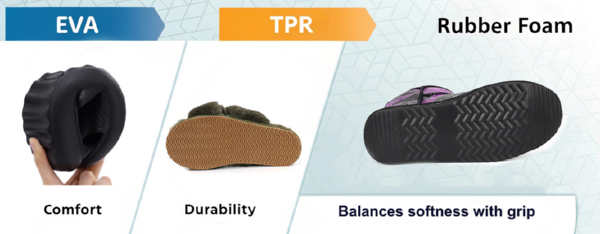The sole is the foundation of any shoe, defining its comfort, performance, and durability. When developing custom shoes, one of the most critical decisions you’ll make is choosing the right sole material. With options like EVA, TPR, and Rubber available, understanding their unique properties is key. Is EVA a good material for running shoes? Is rubber always the most durable choice? This guide provides a deep dive into these three common materials, helping you make an informed decision for your next sneaker manufacturing project.
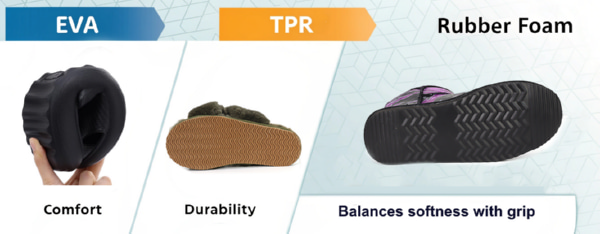
What is an EVA Sole? The Lightweight Champion
What is EVA sole? EVA (Ethylene-Vinyl Acetate) is a foam-like material known for its exceptional lightness and cushioning properties. It has become a staple in modern athletic and casual footwear.
Key Characteristics: Cushioning and Flexibility
EVA’s primary advantage is its excellent cushioning. The closed-cell foam structure absorbs impact effectively, providing superior comfort for walking and running. It also offers remarkable flexibility, allowing the shoe to move naturally with the foot.
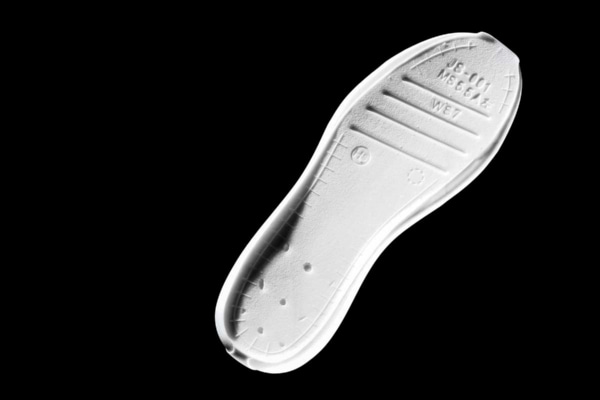
Pros and Cons of Using EVA
- Pros: Extremely lightweight, excellent shock absorption, cost-effective for bulk orders.
- Cons: Lower durability and traction compared to rubber; can compress over time, losing some cushioning.
Best Applications in Sneaker Manufacturing
EVA is the go-to choice for running shoes, lightweight trainers, and casual sneakers where comfort and low weight are the top priorities. Its properties make it ideal for midsoles, often paired with a rubber outsole for enhanced durability.
What is a TPR Sole? The Versatile Hybrid
What is TPR sole? TPR (Thermoplastic Rubber) is a material that blends the properties of plastic and rubber. It’s manufactured to be easily molded, making it a versatile option in sneaker manufacturing.
Key Characteristics: Slip Resistance and Durability
TPR offers good slip resistance and better durability than EVA, making it a reliable choice for everyday footwear. It provides a solid balance between performance and cost, holding up well to regular wear and tear.
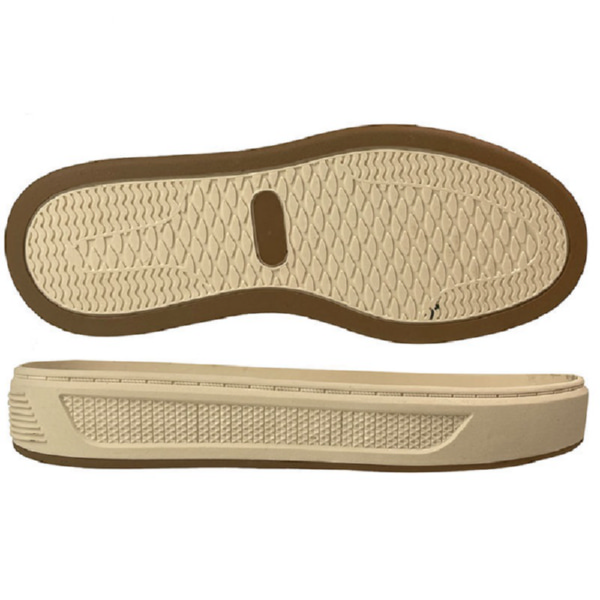
Pros and Cons of Using TPR
- Pros: Good slip resistance, durable, easy to mold into various shapes, moderate cost.
- Cons: Heavier than EVA, less cushioning, and can feel less premium than high-grade rubber.
Ideal Use Cases for Custom Shoes
TPR is perfectly suited for casual shoes, fashion sneakers, and children’s footwear where a balance of durability, slip resistance, and cost is important. Its versatility makes it a popular choice at many a shoe factory.
What is a Rubber Sole? The Classic Benchmark
What is Rubber sole? Natural or synthetic rubber has been the traditional benchmark for high-quality shoe soles for decades, prized for its unmatched durability and grip.
Key Characteristics: Superior Traction and Longevity
Rubber’s standout features are its superior traction and exceptional longevity. It provides an excellent grip on various surfaces, from wet pavement to indoor courts. A well-made rubber sole is highly resistant to abrasion, ensuring the shoe lasts a long time.
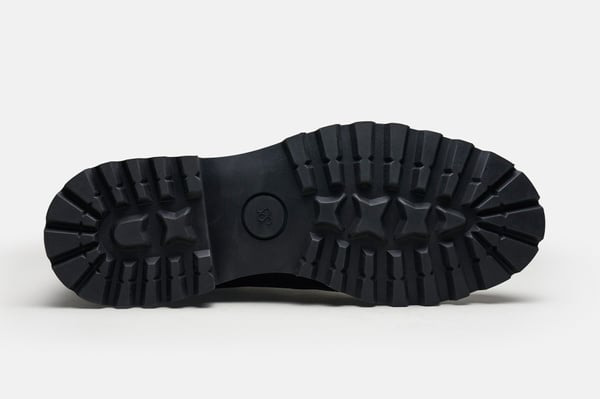
Pros and Cons of Using Rubber
- Pros: Excellent traction and durability, waterproof, premium feel.
- Cons: Heavier than EVA and TPR, generally more expensive, less flexible than EVA.
When to Choose Rubber for Your Footwear Line
Rubber is the ideal choice for performance footwear like basketball shoes, skate shoes, and hiking boots. It’s also used for premium fashion sneakers where durability and a quality feel are essential selling points.
At a Glance: A Direct Comparison of EVA, TPR, and Rubber Soles
To simplify your decision, here’s a direct comparison of the key attributes. Understanding these differences is crucial for any brand involved in designing shoe sole materials.
Comparison Table: Weight, Cost, Durability, and More
| Feature | EVA (Ethylene-Vinyl Acetate) | TPR (Thermoplastic Rubber) | Rubber |
|---|---|---|---|
| Weight | Very Light | Medium | Heavy |
| Cushioning | Excellent | Fair | Good |
| Durability | Fair | Good | Excellent |
| Traction | Fair | Good | Excellent |
| Flexibility | Excellent | Good | Fair |
| Cost | Low to Medium | Medium | Medium to High |
| Best For | Running Shoes, Midsoles | Casual/Fashion Sneakers | Performance/Outdoor Shoes |
Visualizing the Differences
Imagine a running shoe designed for marathons – its lightweight EVA sole reduces fatigue. Now picture a classic skate shoe – its durable rubber sole withstands constant friction. TPR sits comfortably in the middle, perfect for a stylish everyday sneaker.
Making the Right Choice for Your Sneaker Manufacturing Needs
There is no single “best” sole material; the right choice depends entirely on your product’s purpose, target audience, and price point. By understanding the distinct advantages of EVA, TPR, and Rubber soles, you can engineer a product that perfectly meets your customers’ expectations and strengthens your brand’s position in the market.
Want to discuss the ideal material combination for your next footwear project? [Contact our material experts at BMLineColl.com]((https://bmlinecoll.com) for professional guidance.
Frequently Asked Questions About Shoe Sole Materials
Is EVA a good material for running shoes?
Is EVA a good material for running shoes? Absolutely. EVA is one of the best materials for running shoes, especially for the midsole, due to its superior cushioning and lightweight properties. It helps absorb impact and reduce stress on the runner’s joints.
Is TPR more durable than rubber?
Is TPR more durable than rubber? No, high-quality rubber is generally more durable and abrasion-resistant than TPR. However, TPR offers good durability for its cost and is more than sufficient for casual and everyday footwear.
What is the most cost-effective sole material for bulk orders?
What is the most cost-effective sole material for bulk orders? For bulk orders where cost is a primary driver, EVA is often the most cost-effective option, particularly for the midsole component. TPR also presents a very good balance of cost and performance for complete outsoles. The final cost depends on the specific grade and complexity of the mold. To get a precise quote for your project, it’s best to consult with an experienced shoe factory.

